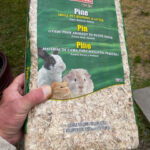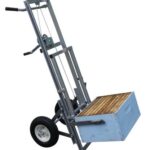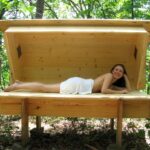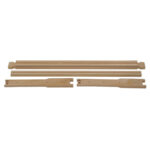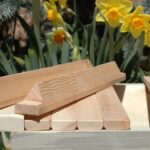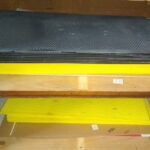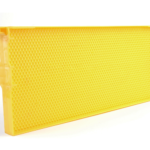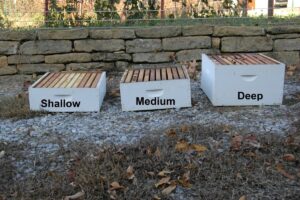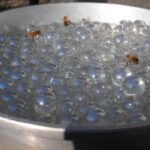The more you get into beekeeping the more you realize that you will need ever more equipment some of which you can make yourself. This blog will explain some of the basic things you might need or get into using and some alternatives to the norm.
Liquid smoke instead of a hot smoker. Very useful for general examinations and safer when the dry grasses make smokers a danger. Hamster or rabbit bedding as fuel for smoker … and then we have the NEEDED Honey super mover instead of throwing ones back out and a warning sign that amazingly is needed to keep people from trying to LOOK inside the hive entrance.
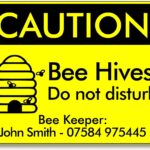 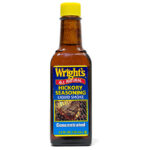 |
Hives vary greatly in shape from the much in favor Langstroth to Warre and Top bar, but adding to the mix are Plastic beehives that give great insulation value. One can also make all your hives with full dimensional (heavy) lumber. Or have fun and design your own. I love the lay me down over the hive option. Mattress and gal not included.
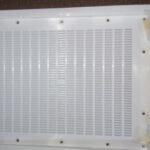 Maxima Plastic Bottom Board |
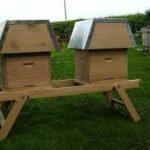 |
Smaller items will also be needed. A beehive escape board for extracting honey supers is a lifesaver and easy to construct. Raising your own queens may also be in your future, but everyone should be able to make splits from a strong hive. A modified Snelgrove board is needed to raise those nucs on top of a warm healthy hive. Later in the year you might also need to make or buy a reversible-robbing-screen. Amazon has a unique multifunctional reversible inner cover that serves as a bee escape board if reversed.
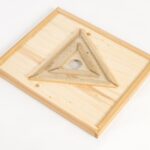 |
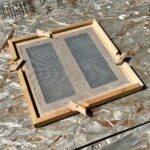 |
 |
Frames come in different forms as well as sizes. Most common is the grooved top and bottom most used with snap in plastic foundation. Wedged top bars also have different bottom bar possibilities. Some are with a grooved bottom, and others have a split bottom which is great for medium or shallow hives specializing in comb honey. The wedge bar can also be used singly, the split wood becoming a substitute for costly top bar frames. I use a one inch strip of pure wax foundation to hasten foundation production. For comb foundation in a shallow I use the split bottom bar and the wedged top with a 5 3/8 foundation insert.
Buy your frame/foundations carefully and avoid the all plastic frame/foundations ones. Another reason being the chemicals incased in such constructs. I tried them on ONE time and opening up the case near fumed me out of the barn. So noxious was the chemical smell. Even after a day in the shop the smell remained. I finally aired them out in the open. It is much like eating farmed Chinese fish, you ingest a months worth of chemicals were they were raised. Bees do not like them. Caveat being that a very strong hive in a honey flow will work them, but a starter hive with packaged bees or a swarm will more likely fail than not.
Buying green drone foundation vs. making your own with a starter strip of pure wax. Green drone foundation which is also all plastic does work (remember it is being used in an established hive with drawn frames. Place to the edge of the hive box. However one can do much the same by simply buying a starter strip of pure wax on a split upper frame. Much cheaper and it contains no chemicals. I simple run the upper frame through with a saw and then nail them tight together. Bottom frames can be purchased already split. (Mann Lake) I carry all three.
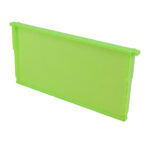 |
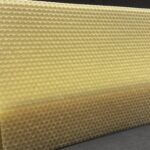 |
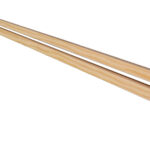 |
A few miscellaneous constructions. Rooster tail feathers instead of a brush. The bee brush. Did you know that the tail feathers of a rooster are gentler on the bees? Using using scrap wood to make your own mating boxes, or even bumble bee nests. I generally make mine out of large old pots.
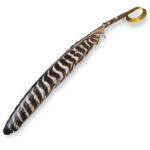 |
 |
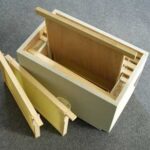 |
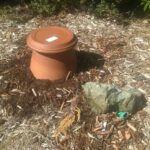 |
Inner covers and I opt not to have a center hole in them. My feeling being that the heat and moisture rising right above the cluster to a cold roof will condense and then rain down on the overwintering and fragile clustered population. In the summer it does not much mater. Another reason being that for dry sugar feeding more holes or dadoed slots is more effective and laying the sugar on the board saves the bees from having to carry out paper towel remnants if they have been laid straight on the frames. Having higher side rails also means you can put five pounds of sugar in. Higher rimed boards can also be used as a moisture absorber in the winter months. I sometimes put one of these on top of the sugar feeder.
 |
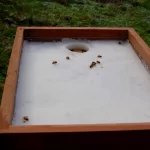 |
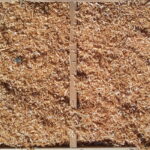 |
There are many different styles of an inner cover. The basic one sold is one big hole large enough to drop in a quart liquid sugar feeder. (You would need a secondary and heat sucking upper super for that) For those needs one could just as easily put in a standing water feeder or put in an insulated foam second hive box. I prefer using dry sugar or fondant as cold sugar water does not work very well. A honey feeder could equally be used or placing some saved comb in a deep walled cover is the best approach. Insulation must be left on the bottom of the Styrofoam or the bees will chew it up.
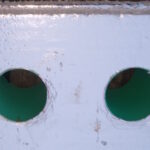 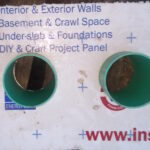 |
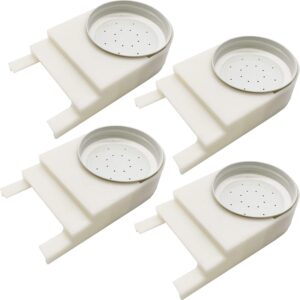 |
The basic rim on one side of the inner cover is about 3/8 deep and the other side shallower at a 3/16 to 1/4 inch. Both are 3/4 inch wide. The larger multi purpose inner cover would be 2″ Depth on one side, and 3/8 depth on the other. The shallow side down for summer leaves a nice dead air space at the top. Less direct heat buildup. In the winter insulation can be left IN this space, making a small Warre type quilt. Left on this way through the summer elsewhere, it would provide even more insulation from the sun. However, I see that ants usually find their way in and make nests if so left.
The 2″ space if not used for insulation provides room for sugar, Fondant or candy board, as well as a pollen patty in the spring build up. Please note other beekeepers use it differently. They turn the deep-side-down during winter months. The extra space beneath the inner cover gives the bees more space to cluster on frame top bars and to move food stores to different locations. I prefer using it as insulation or feeding and if forgotten to be reversed before the hive begins to build up you will find burr comb building up in that extra space.
| Why you might want to consider SHALLOW supers instead of medium for honey production. My reasons are that you can make two supers out of one 12 inch plank or a common 1 by 6. As a plantsman I also love to label the honey flows and try to keep track of what might be in the frames. The Pacific Northwest generally has many small nectar flows other than the maple and blackberry. Shallows catch those better. |
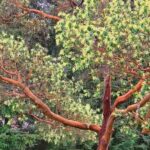 |
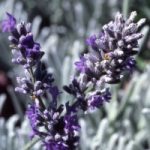 |
 |
And to end this all, there are NO alternatives to reading. Good books and good bookkeeping are essential to a successful Apiary. I happen to hold the clubs library and will lend it them out to all who belong to our local NOPBA club. Come visit us, the second Sunday of every month at the main library in Port Angeles.
Beekeeping is all about being involved and constantly learning. Good books are essential if you are passionate about beekeeping and the deeper you get into beekeeping the more you will realize that there is always something new to learn.
These are two starting books: the very basic Beekeeping for Dummies‘ is easy to read and still contains the most important and up to date information available. The Beekeepers Handbook. goes into more detail and technical information. It contains a lot more information! Our own club’s list of books is a good place to taste many more.
Different pollen collectors
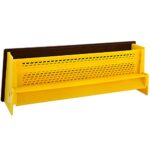 |
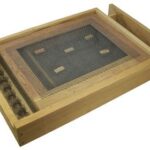 |
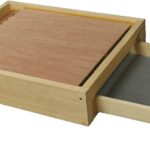 |
Cutting old Langstroth foundation and frames to put into a top bar.

